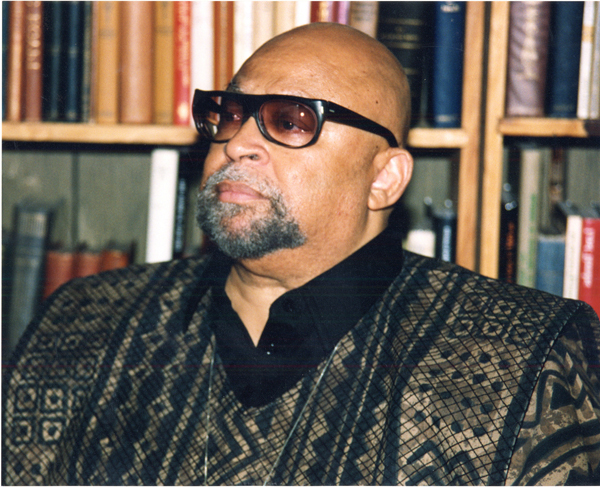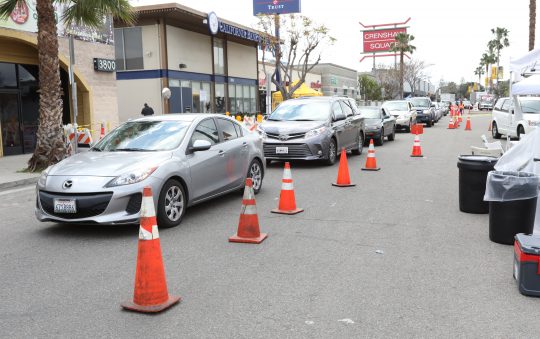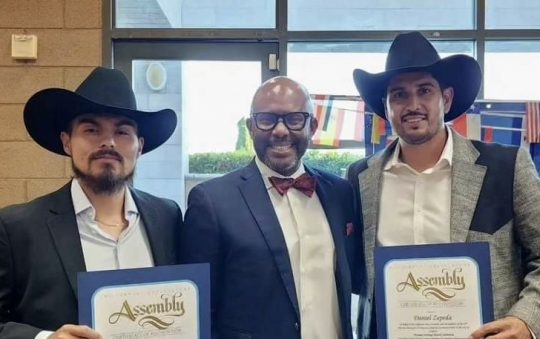
The year 1965 began on an ominous and unsettling note—the assassination and martyrdom of Malcolm X, the Fire Prophet. Even in the white and winter cold of February, it was a sign of the coming fire. Indeed, it pointed toward the fiery fulfillment of prophecy which Malcolm, himself, had predicted. It was there, too, in the title of James Baldwin’s classic, The Fire Next Time. And it was the topic of countless conversations around the country. Baldwin had taken his title from a line in a Black gospel song which says: “God gave Noah the rainbow sign, no more water the fire next time.” And this, for us, was the fundamental time of turning when the fire would be this time.
Malcolm, following Messenger Elijah Muhammad, had talked about God’s judgment of and on America and linked it to the rising tide of resistance to White supremacy around the world and to the coming revolt of the oppressed masses of Black people in this country. It was, he taught, only a matter of time before Black people engaged in a rightful and defensive response to the racist and violent oppression by White people, especially the police as well as the whole system of White supremacy itself. As a Muslim, Malcolm stressed divine fire, but those of us who were less religiously inclined read his prophecy as the coming fires of freedom rising from red-hot battles we would wage for a better world. And so we worked, watched and waited for the spark that would ignite the prairie fire and usher in the era of Marcus Garvey’s promised return in the whirlwind.
Fifty one years ago on August 11, the people of Watts rose up in righteous resistance to oppression, especially police abuse, brutality and violence. It began with the arrest of Marquette Frye and the intervention and arrest of his mother, Rena Frye, and his brother, Ronald Frye. It was for the people a final unbearable act by the police, seen as an occupying army in our oppressed and struggling community. And they rose up, and for six days fought running battles with the police who, unable to suppress them, called in the National Guard. They burned down and often emptied before hand stores and shops which they saw as sites and symbols of their exploitation and humiliation. They took over streets abandoned by fleeing police and began to police themselves, conducting traffic and calling for respect for businesses with window signs saying “Black owned” or “Blood Brother.” For a brief moment in history, the people had risen up to say “no” to police brutality and violence, merchant exploitation, and systemic oppression, and “yes” to the right to rebel against oppression and injustice.
After the six days of righteous rage, upraised fists and fiery resistance, the revolt was over, exhausted in its spontaneity and overwhelmed by the force and violence of the established order. But on the seventh day, the community did not rest. After counting the casualties (34 dead, 1100 wounded), binding and bandaging their wounds and burying their dead, the people continued to struggle in honor of the fallen and for the future of the living, fighting for changes in other ways.
They demanded, first, new police practices and began a systematic monitoring of police in the streets and for a while came to an uneasy informal agreement of mutual respect. Our organization Us and other community organizations organized the Community Alert Patrol (CAP) in that same year, 1965, to follow, monitor and photograph the police, teach the people their rights, and secure pro bono lawyers for those mistreated and wrongfully arrested. Also, the Black community demanded jobs and development monies, early education programs, teen programs and greater respect and representation in the political arena. And there was the constant threat of another revolt if the demands were not met.
Also in this period, institutions were built to facilitate and expand this process including Us, the African American Cultural Center, Kwanzaa and the Nguzo Saba, Ujima Village, Mafundi Institute, the Watts Summer Festival, Watts Health Foundation, Kedren Community Mental Health Center, King/Drew Hospital and Medical School, the Black Congress and the Brotherhood Crusade. The people now walked with a new sense of dignity, identity, purpose and direction. And they defiantly declared their determination to free themselves and contribute to the struggle to free the world, raising the battle cry, “Liberation is coming from a Black thing.”
Meanwhile all over the country, revolts were being waged on the model of Watts. Watts, through the revolt, had become an inspiration and symbol, a point in history where the Black Power phase of the Black Liberation Movement begins. To understand the meaning of this historical moment, learn its lessons and honor its legacy, we must, first, reject attempts to delegitimize the Revolt by calling it a riot, i.e., an unrestrained outbreak without political aims or motivations. For it was a revolt, a collective and open act of resistance to the established order, motivated by political aims and ideas.
We of Us defined the aims of Black revolt in Watts and elsewhere as a collective act of struggle to achieve and secure three things: self-determination, control of our space, destiny, and daily lives in this country and the world-African community; self-respect, cultural grounding which affirms our identity and dignity as persons and a people; and self-defense, the right and responsibility to defend ourselves against systemic and social violence and oppression by any means and sacrifices appropriate to the task. Indeed, we saw revolt as a fundamental and defining practice of Black Power and thus defined the Black Power Movement in the same way.
Also, we must understand the Watts Revolt was not an isolated historical event, but part of a long and continuous history of Black revolts in this country, from revolts during the Holocaust of enslavement to 1992, Ferguson, Baltimore and beyond. All were great sacrifices to secure a foothold of freedom for us to build on and expand in the wilderness of White oppression. Another lesson to learn from the Revolt is that there are strengths and weaknesses in spontaneous revolt and that for a revolt to turn into a thrust towards revolution, toward radical and far-reaching change, there must be a well-thought out philosophy and well-structured, disciplined and adaptable organization.
Finally, there is no more important lesson or legacy from the Watts Revolt than the lesson and legacy of the indispensability, unavoidability and incomparable benefit of struggle. Indeed, there is no relief or remedy except in resistance and no hope or future worthy of the name except that which is forged and founded in ongoing, righteous and relentless struggle. Thus, we in Us rise everyday and say, “it’s a good day to struggle,” well aware of the ancestors’ teaching that “everyday is a donation to eternity and every hour is a contribution to the future.” The struggle, then, continues for the good of Watts, our people and the world, and we are obligated to engage and sustain it. For as we say in Us, “If not this, then what; and if we don’t do it, who will?”
Dr. Maulana Karenga, Professor and Chair of Africana Studies, California State University-Long Beach; Executive Director, African American Cultural Center (Us); Creator of Kwanzaa; and author of Kwanzaa: A Celebration of Family, Community and Culture and Essays on Struggle: Position and Analysis, www.AfricanAmericanCulturalCenter-LA.org; www.OfficialKwanzaaWebsite.org; www.MaulanaKarenga.org.






